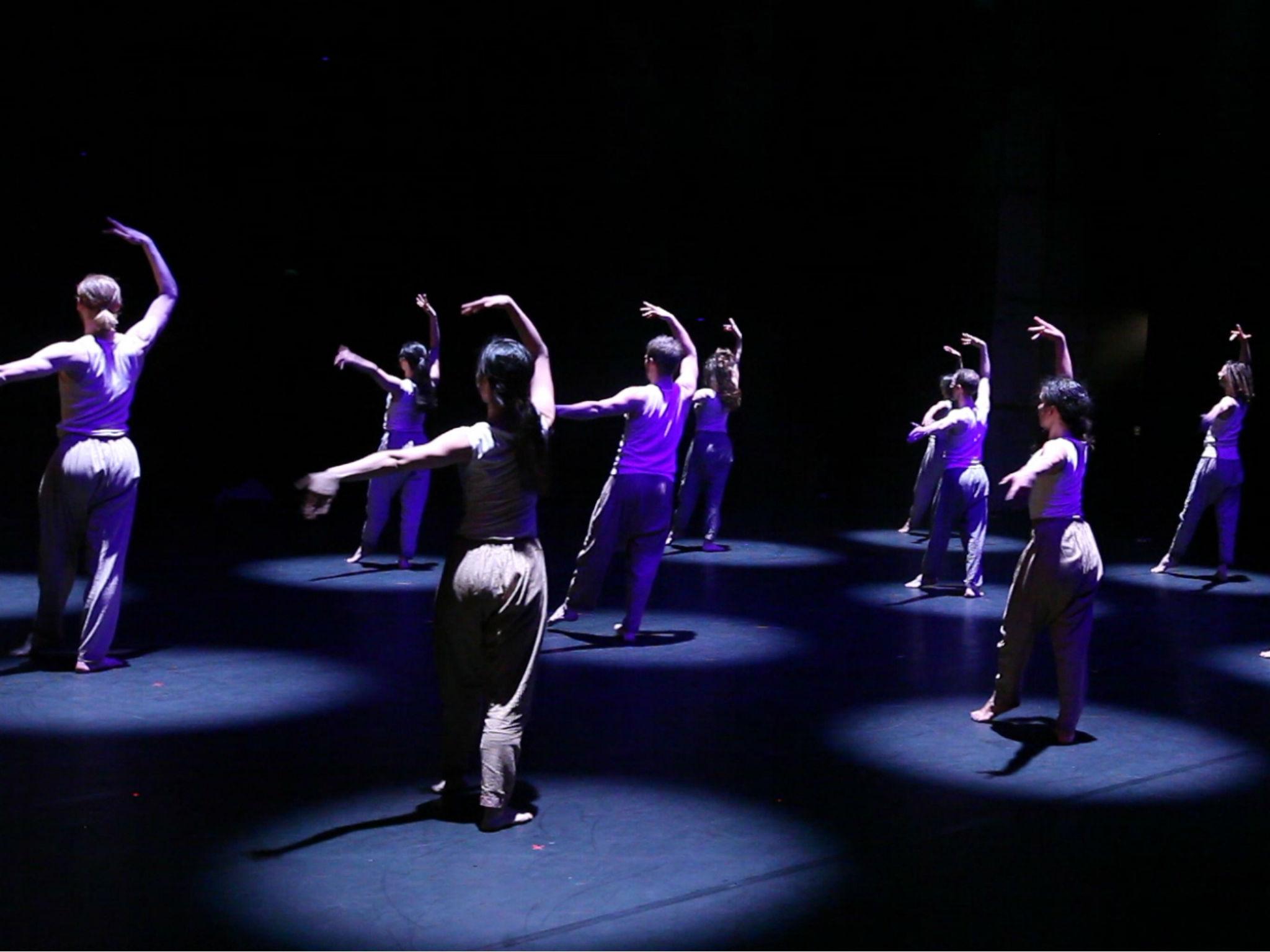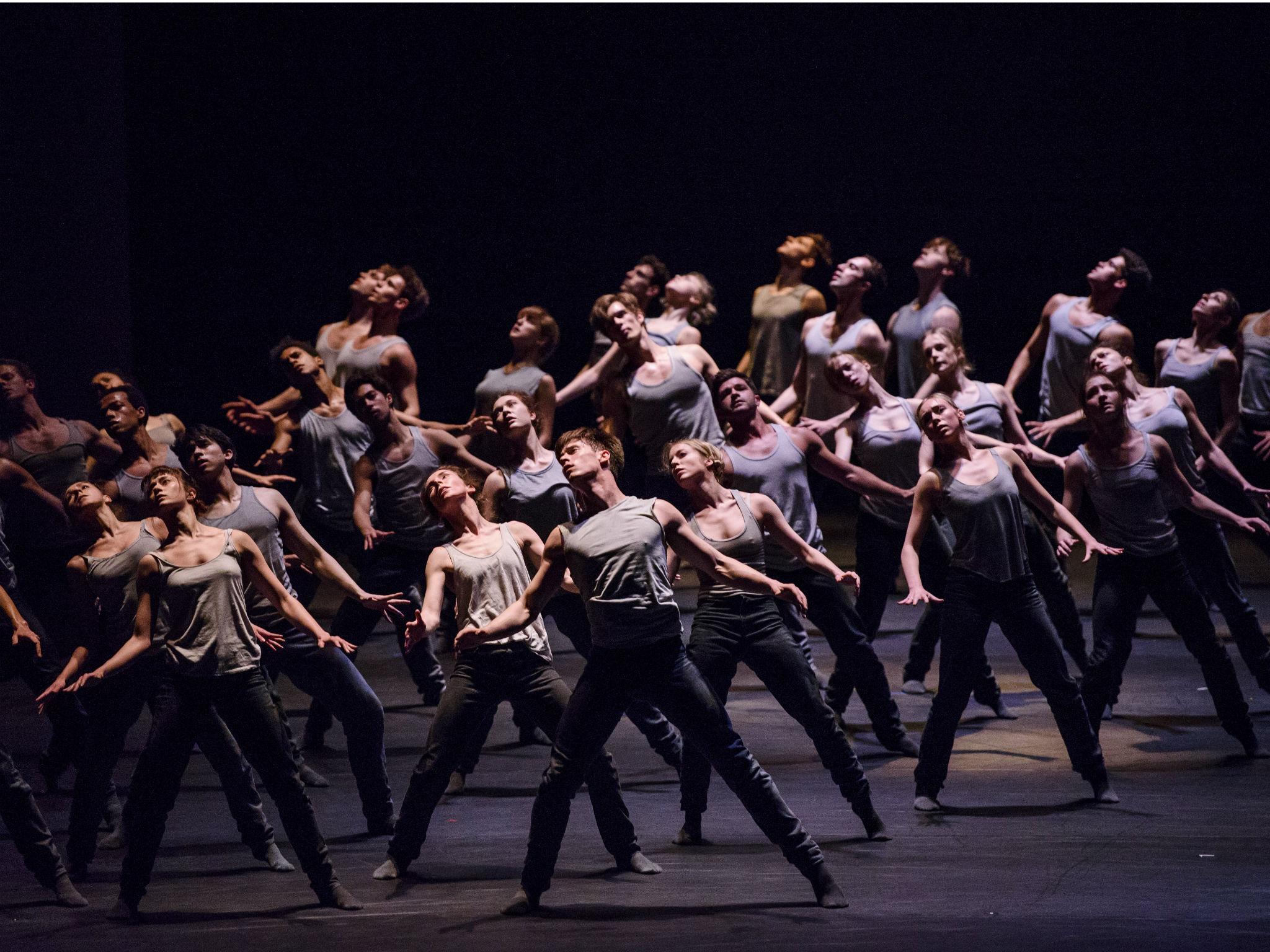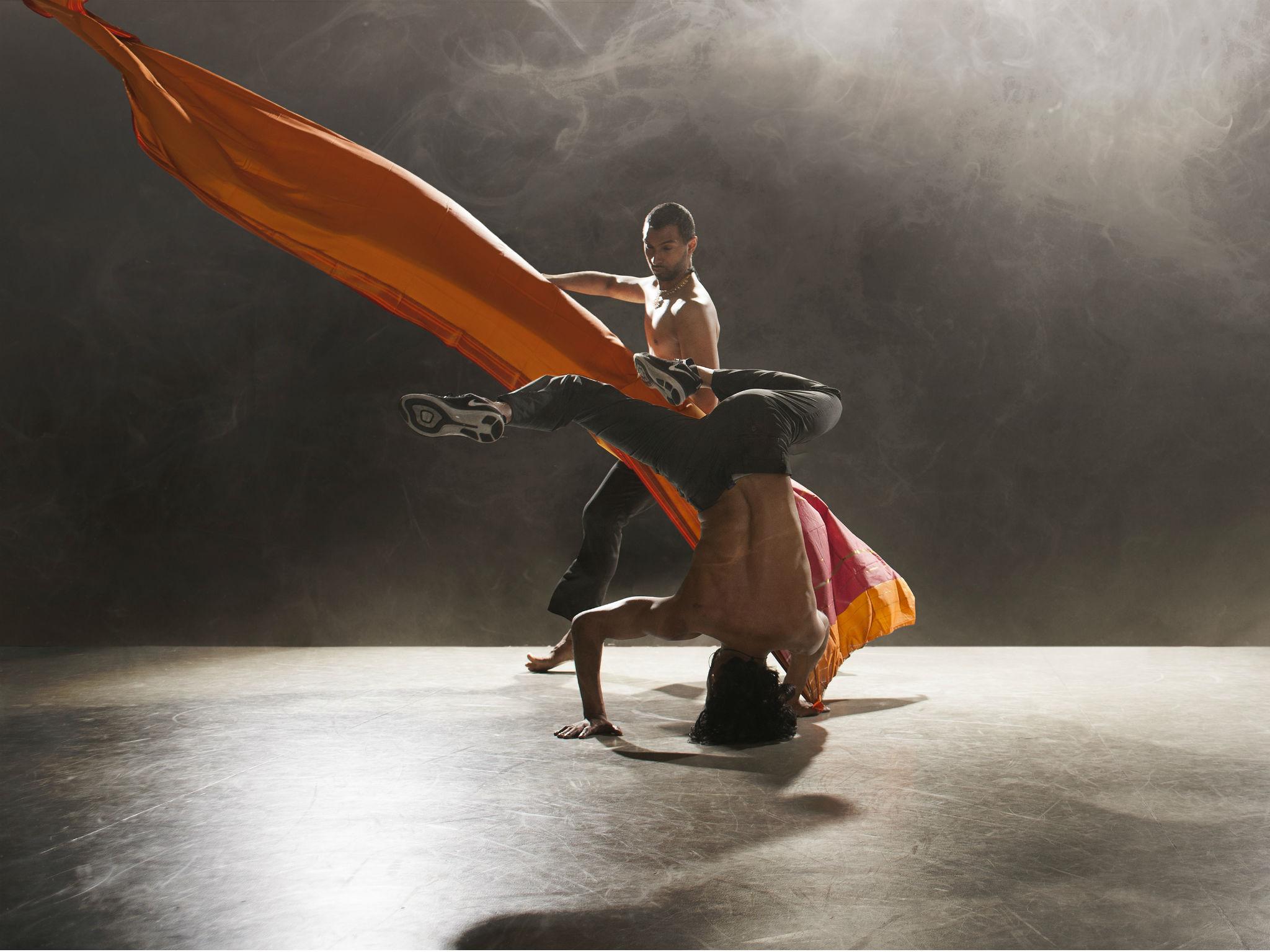How dance can be a force for political power: Requiem for Aleppo had recorded testimonials from Aleppans speaking of their memories of the city
Dance performances including 'Requiem for Aleppo' performed at Sadler’s Wells and the upcoming 'Material Men Redux' at The Place show how inherently political the moving body really is

Your support helps us to tell the story
From reproductive rights to climate change to Big Tech, The Independent is on the ground when the story is developing. Whether it's investigating the financials of Elon Musk's pro-Trump PAC or producing our latest documentary, 'The A Word', which shines a light on the American women fighting for reproductive rights, we know how important it is to parse out the facts from the messaging.
At such a critical moment in US history, we need reporters on the ground. Your donation allows us to keep sending journalists to speak to both sides of the story.
The Independent is trusted by Americans across the entire political spectrum. And unlike many other quality news outlets, we choose not to lock Americans out of our reporting and analysis with paywalls. We believe quality journalism should be available to everyone, paid for by those who can afford it.
Your support makes all the difference.Twelve dancers from around the world joined together to express their solidarity with the people of Aleppo through the medium of dance at Sadler’s Wells last Sunday. The world premiere of David Cazalet’s evocative composition Requiem for Aleppo, which was performed to raise money for Syria and the refugee crisis, included recorded testimony from Aleppo, as well as drawing on the Requiem Mass and Medieval Arabic poetry.
Choreographed by Jason Mabana and featuring the vocals of Juliana Yazbeck, movements are woven through with symbolism: hands lifted in surrender, cheeks tenderly touched while each dancer tirelessly runs under a harsh spotlight. As the dancers assume the position of lifeless corpses, recorded testimonials from Aleppans speak of their memories of the city while the dancers spin in whirling dervish skirts. A disembodied voice says, “You don’t know when death is going to come.” It is haunting to watch.
Yet the premise for Requiem for Aleppo provokes a crucial question: can dance meaningfully add to the language of politics and protest?
Attempts to understand political events through dance have a long history. In the Thirties and Forties Anna Sokolow used dance to address the American Depression and rights of workers. In the 1950s, Southland by Katherine Dunham portrayed lynching to highlight the treatment of African Americans in the southern states of the US. Such was the shock of audiences that the piece was never actually performed in the US itself and Dunham suffered professionally for her audacity. More recently, Alvin Ailey’s Masekela Language, first created in 1969 and still in the company repertoire, highlighted parallels between South African apartheid and racial discrimination in Chicago.

The method continues; the issues change. Celebrated Canadian choreographer Crystal Pite’s Flight Pattern, which premiered in March, addressed what Pite has called “the story of our time”: migration. Created for a cast of 36 dancers, their collective movement aspired to a sense of sculptural unity while emphasising the dehumanising nature of mass migration. Wayne McGregor’s 2016 Multiverse attempted to absorb current politics rather than obviously protest it; his dancers performing in front of fragmented news stills of Mediterranean migrants. While Shobana Jeyasingh’s upcoming production of Material Men redux will explore the traces left by migration on the life and bodies of two dancers – one hip-hop, the other classical – of the Indian diaspora.
During the creation of Material Men Jeyasingh carried out extensive research and listened to the family histories of her two star dancers. Surprised by the archival images of migrants, Jeyasingh says “they were not dissimilar to the images we see now in the news... There were images of hundreds of men, women and children. Then and now they were desperate people.” She adds: “It’s not new. It is easy to have sensational viewpoints but if you know history, you see the patterns. That’s why it’s so important we have a history that is told from both sides, not just the side that won.” Showing how these political events become personal history inscribed on the body, Material Men redux attempts to create “new ways of belonging” only possible, according to Jeyasingh, if art “promotes a feeling of common humanity”.
Can dance really have this kind of impact? When Dunham took to the stage of the Teatro Municipal in Santiago in 1951 she said she needed to “show this thing to the world, hoping that by exposing the ill, the conscience of many will protest”. Echoing Jeyasingh, dance scholar Rebekah Kowal suggests that such performances “blur the boundaries between the theatrical and the real” and that audience engagement is part of powerful collective experience leading to action. While Anusha Kedhar, another influential dance expert, argues that choreography actually allows the audience to “see politics more clearly”.

This consensus, that political dance succeeds by manifesting the abstract and harnessing the power of collective experience, explains recent instances where both improvised dance and choreographed movement have been effective in public protests. Dance has often played a role in LGBTQ protests, most recently to protest Donald Trump’s policies. The One Billion Rising movement uses ecstatic dance in public spaces to highlight violence against women, while the disturbing “die-ins” choreographed by some members of the Black Lives Matter movement show successful protest means much more than placards.
These uses of movement reinforce the fact that the body is inherently political. But how much impact is likely to survive the upholstered seats and interval drinks of a staged performance? It’s possible that theatrical representation – the translation of political struggle into aesthetic performance – actually facilitates apathy by reinforcing conditions of inequality. The proscenium arch which frames the stage of traditional theatres was specifically designed to create distance between performers and the audience.
Perhaps simple technological tweaks can dissolve this distance and give new meaning to the well-intentioned phrase “expression of solidarity”? Techfugees, a volunteer charity of technology experts, punctured the proscenium arch through a live-stream broadcast of Requiem for Aleppo. Joining those seated in silence and darkness at Sadler’s Wells, some of the men, women and children of Aleppo were able to participate in the “collective experience” of dancing politics. Instead of remaining disembodied voices they become visible as members of the audience. Their presence was crucial: bringing the theatrical performance closer to the spirit of direct action protests, involving those actively affected and avoiding the objectification of suffering. For a visit to the theatre to become a transformative experience, watching must become empathy – and then action. It is the content of these actions that determine the political power of dance.
Shobana Jeyasingh’s ‘Material Men redux’ is at the Place on 28 and 29 April
Join our commenting forum
Join thought-provoking conversations, follow other Independent readers and see their replies
Comments